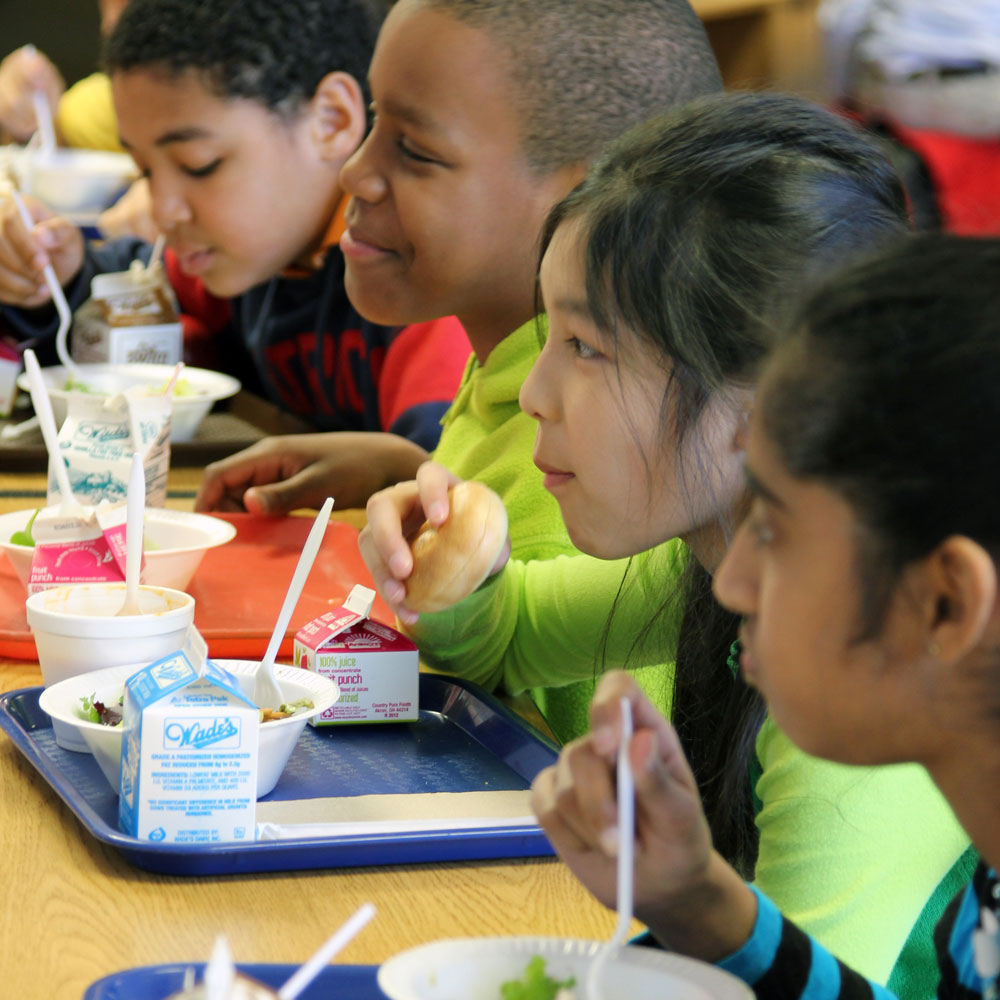
April 9, 2020; Detroit Free Press, CNN, and Civil Eats
America’s schools are not only where our kids go to learn. Nearly 12 million young Americans receive a free breakfast, and 22 million get free or reduced-cost lunches. These programs are an integral part of US policies to bolster food security. So, with schools closed all across the country, what now?
The Families First Coronavirus Act of 2020 includes several provisions to boost food security. Last week, Michigan became the first state to take advantage of Pandemic EBT, an expansion of SNAP benefits (previously known as food stamps). The state is increasing SNAP benefits to families in the program, and additionally sending EBT (electronic benefits transfer) cards to students who usually receive breakfast and lunch at school, but whose families have not previously participated in the SNAP program. Families will receive the cash equivalent of school breakfast and lunch for each eligible child, about $193 per child per month in Michigan.
The Michigan program is expected to reach 895,000 children. According to the Detroit Free Press, “the state predicts more than $105 million will go to 250,000 SNAP benefit recipients and more than $231 million will go to 405,000 non-SNAP families through June 15.”
It has taken some time for the US Department of Agriculture to get this program up and running. Crystal FitzSimons, director of school programs at the Food Research & Action Center, tells CNN, “We need to get these benefits to household so that they are not experiencing hunger and food insecurity.”
But even as states receive approvals, the rollout is expected to be slow. In Virginia, about 600,000 children participate in the school meals program, but only half their families participate in SNAP. Duke Storen, commissioner of the Department of Social Services, tells CNN that the state is waiting to see if they can begin getting the additional supplement out to SNAP recipients right away, as they figure out the implementation challenges of reaching the additional families who don’t participate in the program. He expects that could take at least three weeks.
Sign up for our free newsletters
Subscribe to NPQ's newsletters to have our top stories delivered directly to your inbox.
By signing up, you agree to our privacy policy and terms of use, and to receive messages from NPQ and our partners.
In the meantime, schools have devised other ways to deliver meals to needy students and adults. The coronavirus legislation provided waivers to education departments, so school nutritional programs could serve meals outside of their traditional cafeteria locations. Many cities and towns have set up grab-and-go programs. In Los Angeles, for example, the schools have served about 5 million meals at 63 grab-and-go food centers since March 16, when the schools shut down. New York City’s public schools have set up 400 grab-and-go food sites. Both cities have made food available to children and adults alike.
Austin Beutner, superintendent for the L.A. Unified School District, which has a student population of 700,000, told Civil Eats, “Many of the families we serve are just struggling to make ends meet. They’re the dishwasher, the bus driver, the hourly worker, who, unfortunately in this calamity, are the first to be laid off. We decided that we were going to serve all of those who came and needed help, no questions asked.”
For school districts that are used to preparing meals, the new programs require ingenuity. Kitchens are basically shut down, so they are finding ways to put together healthy options with sandwiches, packaged fruits and vegetables, yogurt, and cheese.
The Minneapolis public schools have partnered with a local nonprofit, The Sheridan Story, which fights child hunger, to help families stock their pantries with pasta, tomato sauce, rice, and beans. But the school district reports that it faces challenges. Bertrand Weber, who heads up the public school culinary program, says only 25 percent of its 330-member school nutrition staff is working regularly, as many fear they could contract the coronavirus if they leave home.
Just as society is realizing that grocery workers are “essential,” so are our school cafeteria workers. Many are older people of color, among the most vulnerable to serious infection from the coronavirus. Jessica Shelly, director of student dining services for the Cincinnati Public Schools, put it this way: “The title of ‘lunch lady’ is going to be replaced by school nutrition hero. Not all heroes wear capes: some wear aprons.”—Karen Kahn












